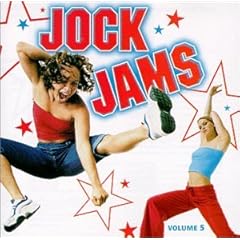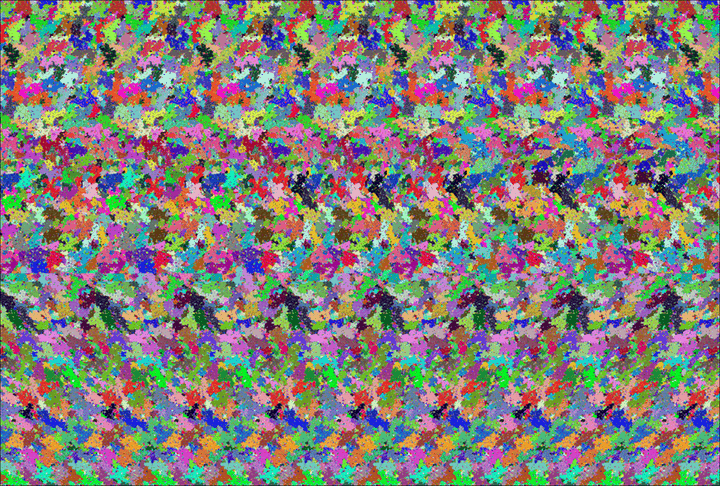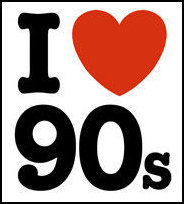
In light of the late-breaking 90s news that the Babysitters Club* is being revamped for a new generation of kids, it seems only appropriate to give the BSC some well-deserved Children of the 90s fanfare. I occasionally pick up some flack for my coverage of girly topics, but this time around you're just going to have to deal with it. Things are going to get downright feminine here, so don't say I didn't warn you. We're going to talk about slumber parties and crushes on boys and young female entrepreneurship and you're going to like it, dammit.
The Babysitters Club was a formidable 90s franchise, spawning a series of books, a TV show, a feature film, and countless items of allowance-worthy tie-in merchandise. The series focuses on a group of business-minded middle-school aged girls who form a well-organized club to process and dispatch sitters for local childcare requests. As a child, I revered their detail-orientation and maturity, but as an adult, I find it harder to believe that people would trust these 12- and 13-year olds with their easily breakable infants. Youth notwithstanding, it's probably more impressive that the girls managed to get the whole neighborhood to cave to their demands for hourly rates. These girls were good.
Author Ann M. Martin pumped these books out at regular intervals from 1986 to 2000, producing 213 books selling over 176 million copies. This woman is a veritable BSC-producing machine. She had a unique sense of appeal to tweenage girls, piquing their interest with wholesome stories of everyday obstacles.
Martin gave us all of our favorite stock characters, forever categorizing each of us as "a Mary Anne" or "a Kristy". I always wanted to be a Claudia or a Stacey because of their keen fashion sense and model beauty, but I had a nagging suspicion growing up that I was more of a Mallory. If you've ever read the series, you know this to be a huge bummer. You'll be glad to know I managed to escape the Mallory route by never growing curly red hair, getting glasses, or being born into a family of 10, but it was a close one there for awhile.
It's possible I'm getting a bit ahead of myself, as I have yet to properly introduce you to our cast of characters:
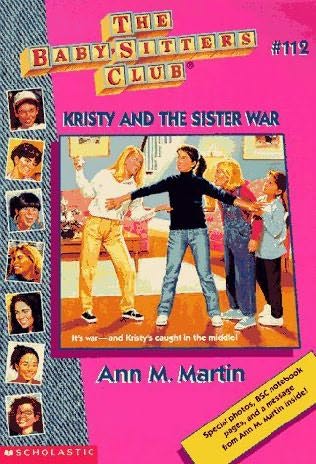 Kristy Thomas: Our fearless leader and self-proclaimed tomboy. In 90s young adult books you could always tell if a girl wasn't particularly into her looks if she wore her hair in a ponytail, and Kristy was no exception. I call it the curse of the Elizabeth Wakefield; God forbid a girl has a bad hair day, these YA authors will forever relegate her to being the serious one. Everyone knows all the real fun-loving girls of YA lit wear their hair flowing and loose. It's pretty much the only symbol we have for the personality of a middle-school aged girl.
Kristy Thomas: Our fearless leader and self-proclaimed tomboy. In 90s young adult books you could always tell if a girl wasn't particularly into her looks if she wore her hair in a ponytail, and Kristy was no exception. I call it the curse of the Elizabeth Wakefield; God forbid a girl has a bad hair day, these YA authors will forever relegate her to being the serious one. Everyone knows all the real fun-loving girls of YA lit wear their hair flowing and loose. It's pretty much the only symbol we have for the personality of a middle-school aged girl.But enough of Kristy's lamentable ponytail. Kristy is bossy, outspoken, and sporty. She's generally a fair and benevolent ruler, though occasionally she lets the glamor of her presidency of a suburban middle-school babysitting club cloud her better judgment.
 Mary Anne Spier: The requisite quiet and shy girl, Mary Anne is Kristy's best friend. The two are initially neighbors until Mary Anne's dad marries Dawn's mom. At the beginning of the series, her single father is very protective and strict, but all that fizzles out once they integrate with the hippie Schafers. Mary Anne is the first of the girls to have a boyfriend, and let me just say that based on the actor in my Scholastic Book Order's VHS copy of Mary Anne and the Brunettes, Logan Bruno is definitely a catch.
Mary Anne Spier: The requisite quiet and shy girl, Mary Anne is Kristy's best friend. The two are initially neighbors until Mary Anne's dad marries Dawn's mom. At the beginning of the series, her single father is very protective and strict, but all that fizzles out once they integrate with the hippie Schafers. Mary Anne is the first of the girls to have a boyfriend, and let me just say that based on the actor in my Scholastic Book Order's VHS copy of Mary Anne and the Brunettes, Logan Bruno is definitely a catch. Stacey McGill: Our fun, stylish, blonde model friend. I dotted my i's with hearts for probably six months after I read that was Stacey's signature style. I was hoping I would morph into a Stacey on the merit of my bubbly handwriting alone, but the undertaking was generally fruitless. I guess I just wasn't permed enough.
Stacey McGill: Our fun, stylish, blonde model friend. I dotted my i's with hearts for probably six months after I read that was Stacey's signature style. I was hoping I would morph into a Stacey on the merit of my bubbly handwriting alone, but the undertaking was generally fruitless. I guess I just wasn't permed enough.Stacey is a the club's resident exotic sophisticate, with her New York City nativity, modeling career, and diabetes. I was actually jealous of Stacey's diabetes as a kid. She's special in every way, plus she gets a lot of bonus outpourings of attentions due to her periodic hospitalizations. That's the way my 7-year old mind interpreted it, at least. Some people have all the luck.
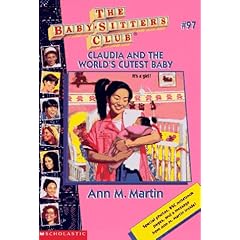 Claudia Kishi: The artist of the group. Claudia is funky, candy-addicted, and terrible at all things academic. She's also Asian, giving the group a much-needed breath of diversity, at least until Jessi comes along. If you've ever seen the movie, you know that her poor grades warrant summer school and a hearty performance of the chant, "The brain, the brain, the center of the chain!" Her family is pretty by-the-books, so they're naturally bothered by her outlandish appearance. Treble clef earrings and fringed vests? For shame.
Claudia Kishi: The artist of the group. Claudia is funky, candy-addicted, and terrible at all things academic. She's also Asian, giving the group a much-needed breath of diversity, at least until Jessi comes along. If you've ever seen the movie, you know that her poor grades warrant summer school and a hearty performance of the chant, "The brain, the brain, the center of the chain!" Her family is pretty by-the-books, so they're naturally bothered by her outlandish appearance. Treble clef earrings and fringed vests? For shame. Dawn Schafer: The hippie do-gooder of the group. Dawn is a blonde vegetarian Californian, descriptors that the books treat as generally interchangeable. She and Mary Anne are step-sisters, which causes some rifts from time to time but is generally pretty cool. She eventually moves to California and gets her own spin-off book series, but not before the TV show's Dawn got to hang out with Zack Braff. No, really. He was there when Dawn saved the trees. I've even got the video evidence to prove it:
Dawn Schafer: The hippie do-gooder of the group. Dawn is a blonde vegetarian Californian, descriptors that the books treat as generally interchangeable. She and Mary Anne are step-sisters, which causes some rifts from time to time but is generally pretty cool. She eventually moves to California and gets her own spin-off book series, but not before the TV show's Dawn got to hang out with Zack Braff. No, really. He was there when Dawn saved the trees. I've even got the video evidence to prove it:
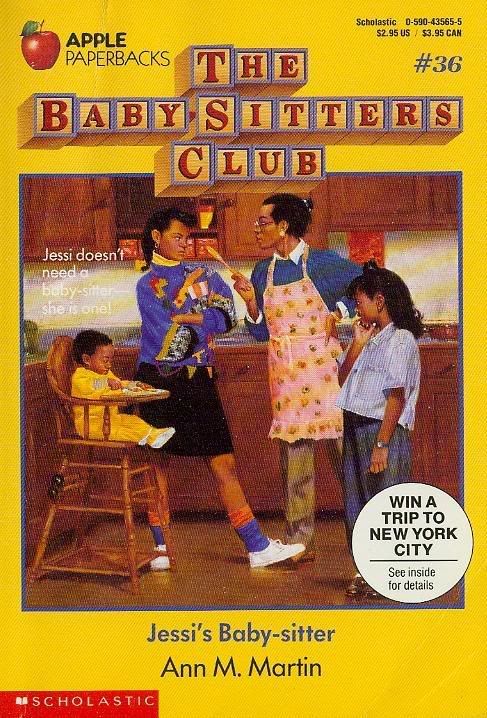 Mallory Pike and Jessi Ramsey: Our junior members, meaning they are a grade younger than the other girls and thus vastly inferior according to the club's rigid membership standards. Mallory comes from a huge family of freakish gingers and Jessi is black and a ballerina. I'm sure they have other traits, but these are the main ones the books tend to dwell on.
Mallory Pike and Jessi Ramsey: Our junior members, meaning they are a grade younger than the other girls and thus vastly inferior according to the club's rigid membership standards. Mallory comes from a huge family of freakish gingers and Jessi is black and a ballerina. I'm sure they have other traits, but these are the main ones the books tend to dwell on.When the TV show premiered, I was decidedly heartbroken that my house's sub par cable didn't include HBO or the Disney Channel. Luckily, through the aforementioned magic of Scholastic Book Orders, I got the full set on VHS. I'm still bitter at whoever taped Oprah over the second half of Stacey's Big Break. You know who you are. Anyway, whether or not you were a fan of the show, hopefully you knew the incredibly catchy theme song:
I'm not embarrassed to admit this song graced a few of our pre-gaming playlists in college. Okay, it's totally embarrassing, but I sacrifice myself at the altar of your collective bemusement at my expense. You're welcome.
There was also an eponymous full-length film starring Rachael Leigh Cook, Larissa Oleynik, and some less famous people. The movie wasn't exactly a box-office blockbuster, but was generally pretty satisfying to fans. I know I'm still heartbroken that I no longer have any technological apparatus on which to play my VHS copy. I did, however, recover this song from the soundtrack for your listening enjoyment. Again, I take full responsibility for my terrible, terrible taste in music as a child.
These girls may not have been extraordinary in any way, but children in the 90s took to them for that reason: they were decidedly ordinary. I imagine if the revamped books catch on, an entirely new generation of girls will fall in love with them all over again. Only this time around, they'll all have iPods and cell phones instead of Walkmans and their own phone lines. A small price to pay for some good old-fashioned wholesome fun, don't you think?
*And yes, I heard about Diablo Cody's Sweet Valley High movie project, but that will just have to wait its turn. Honest to blog. See, I can say that here, cause it makes sense.


































